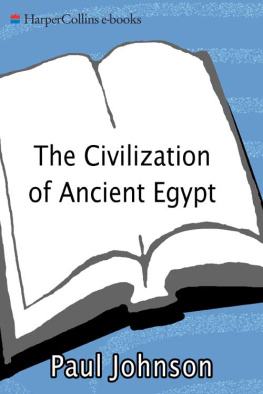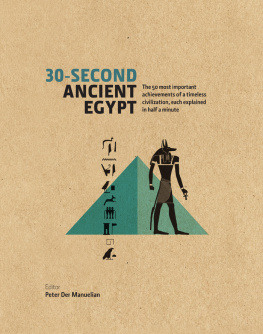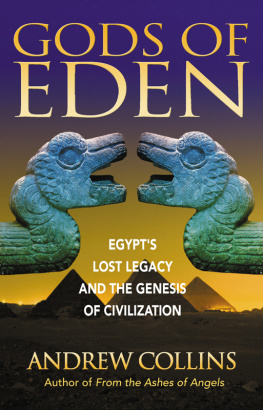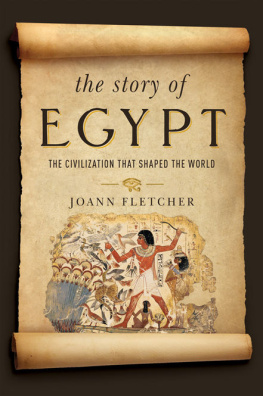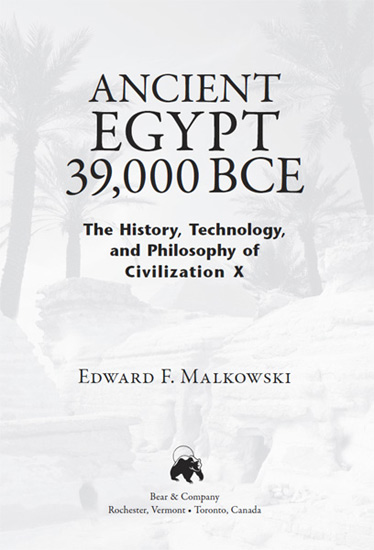
ACKNOWLEDGMENTS
It has been a pleasure working with two progressive and open-minded scientists:John Cadman and Thomas Malkowski. Their scientific insightshave been an invaluable source.
John Cadman, I believe, will someday go down in the history books forhis experiments and modeling of the Great Pyramids subterranean chamberand passageways. To the best of my knowledge, he is the only personto experimentally demonstrate something, anything, about Gizas GreatPyramid. In my opinion, his work is the discovery of the century.
Thomas Malkowski, my son, has proven over the years to be a challengingantagonist. As a studying physicist, he has more than once steered mein the correct direction while Ive been in the process of building a viabletheory to explain ancient Egypts network of pyramids. He shares the creditwith me for the pyramid theory put forth in this book.
The quest to understand ancient Egyptian civilization encompassesmany years of work by many researchers, including John Burke and PhilipCallahan and their research about ancient agriculture; John AnthonyWest and Robert Schoch for their research into the age of the Sphinx;Christopher Dunn for his work in discovering proof positive that the civilizationthat built the pyramids employed some type of machine tools;Dr. Paul LaViolette and his research into galactic core bursts; and RichardFirestone, Allen West, and Simon Warwick-Smith for their work in discoveringevidence of prehistoric gamma-ray bursts and their consequencesfor life on Earth.
CONTENTS
FOREWORD
My own journey into the subject of ancient Egypt began in early 1999.At that time I had no interest in the pyramids, and like most people, Iassumed they were little more than overrated piles of rock that had beenused for someones burial. Also at that time I never dreamed I would oneday be writing a foreword to one of the most fascinating books regardingancient Egypt.
Winters are dark and rainy in northwest Washington. With littleelse to do, I had made a habit of exploring local bookstores. On onesuch outing in 1999 I came across Edward Kunkels book The PharaohsPump, which put forth an interesting proposition: the Great Pyramidhad a hydraulic ram pump built into the subterranean section. AlthoughKunkels work had been around since the early 1960s, I had never heardof it, and after reading it, it made no sense to meexcept for one section.Kunkel claimed that an advanced whirlpool had once existed within thesubterranean chamber. For me, that not only seemed plausible, but quiteingenious.
Intrigued, I sorted through dozens of books and scoured the Internetfor pictures and descriptions of the subterranean section of the GreatPyramid. As a result of this research, my interest continued to grow,and I soon embarked on a quest to build a model of the subterraneansection. Almost exactly a year after learning of Kunkels theory, I completeda running model of this subterranean section, 1:48 scale ( inchto the foot). My approach was scientific. In addition to building the model, I described specific experimental setups and recording designs. Ireported all the results; these can be viewed on my website.
That was seven years ago. Since then, my workunaltered since2002 when the final subterranean flows were determinedhas been critiquedby some of the top people in the engineering field and has heldstrong. The models that I built can be built by anyone, which I stronglyencourage anyone with a keen interest to do. (For you Mythbusters fans,I have submitted my work on the Great Pyramids subterranean chamberto them.)
A year ago Edward Malkowski informed me that he intended todescribe my work in his book Ancient Egypt 39,000 BCE and that mywork was going to be the basis for a new theory on the purpose of thepyramids and the Great Pyramid. Much of the evidence he describes inthis book is scientific and backed by substantial data, and I am proud tobe part of it.
For me, Ancient Egypt 39,000 BCE is the culmination of years ofdiscovery by a number of people that comes together to paint a fascinatingpicture of the past. These individuals present not only their views,but their personal research, undertaken over the decades. John AnthonyWest and Robert Schochs research and compelling theory is presentedhere: that rainfall eroded the Great Sphinx, thus redating its carving bythousands of years. Sir William Flinders Petrie and Christopher Dunnsinsightful analysis of precision granite artifacts is covered extensively, withbeautiful photos. However, the most important artifact, in my opinion,is the stone at Abu Rawash, dubbed by Malkowski the new RosettaStone. I completely agree with him that its discovery will eventuallychange how we view history.
Indeed, my own research into the past parallels Malkowskis, particularlyone of the least understood eventsthe end of the Ice Age and thedeath of millions of animals and numerous species. Around 9750 BCE, withthe end of the Ice Age, came the formation of the Carolina Bays, more than500,000 shallow elliptical depressions found along North Americas Atlanticcoastal plain from New Jersey to Florida. At the bottom of these bays is anunusual blue clay containing iridium, carbon spherules, and nanodiamonds, which have been determined to be extraterrestrial markers. Ted Bunch,Richard Firestone, and Ken Tankersley propose that the formation of thesebays is linked to the Younger Dryas impact event, which may have led to theextinction of large mammals, such as mammoths, and the Clovis people, thefirst inhabitants of North America.
I especially appreciate Malkowskis coverage of this episode in Earthshistory in chapter 11, An Invisible Cataclysm. Any civilization thatexisted prior to the end of the Ice Age would have suffered as greatly asthe animals did. The decimation of a technical society would certainlyexplain the evidence put forth here.
After being captivated by ancient Egypt in 1999, I purchased a greatnumber of orthodox and alternative books about Egypt and trawled theInternet to uncover a wealth of information on the topic. If I were to recommenda single book on this subject, Ancient Egypt 39,000 BCE wouldbe the one Id share with my friends. Edward Malkowski has assembledthe best pictures and data, and I believe it is very important to know whatothers have already discovered and the wealth of historical informationthat has been put forth. It is my hope that you read this book with anopen mind and enjoy the theories and opinions contained herein. Andwhile we need to be open to new discoveries, these discoveries must berigorously tested and analyzed.
It is also my wish that you pursue your own research to the best ofyour ability and always use your intuition and imagination. This wasabsolutely key for me.
JOHN CADMAN
John Cadman is a marine engineer who spent three years scientifically investigatingthe subterranean chamber of the Great Pyramid. As a consequence ofhis investigation, he invented the self-powered pulse pump, which pumps waterwithout the aid of electricity. He also spent a number of years as the chief engineerof a king crab boat sailing the Bering Sea.
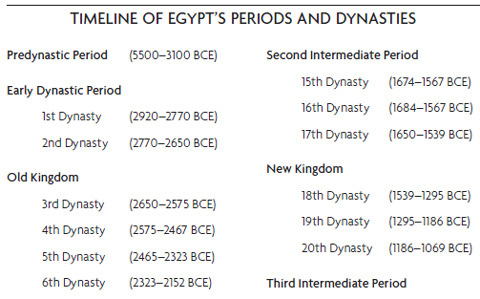
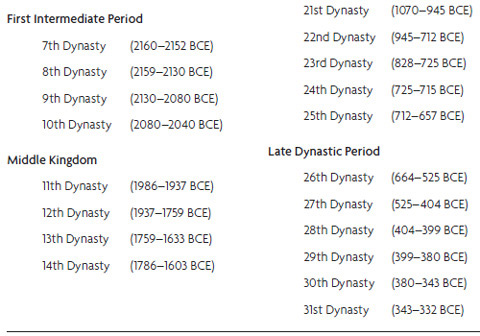
Note to the Reader: Some of these dynastic dates overlap, which is endemic to the fieldof Egyptology given the speculative nature of the discussion.
Next page


